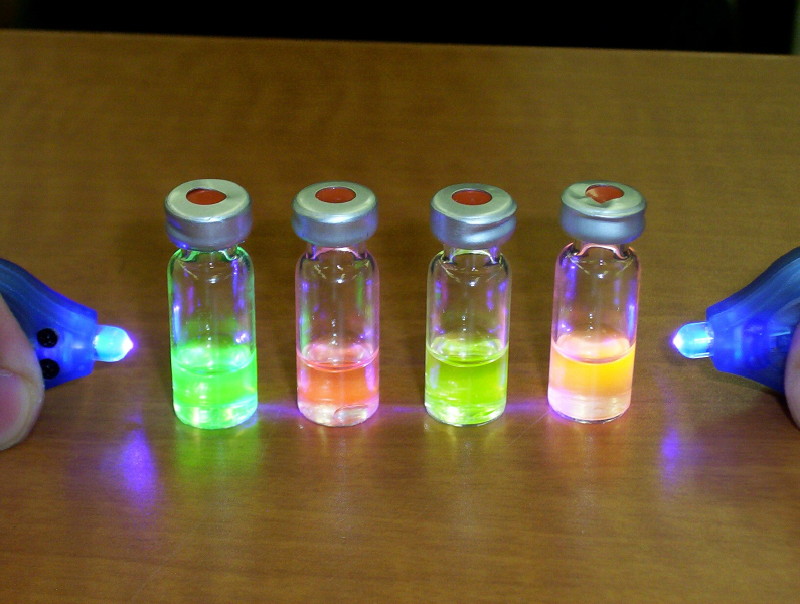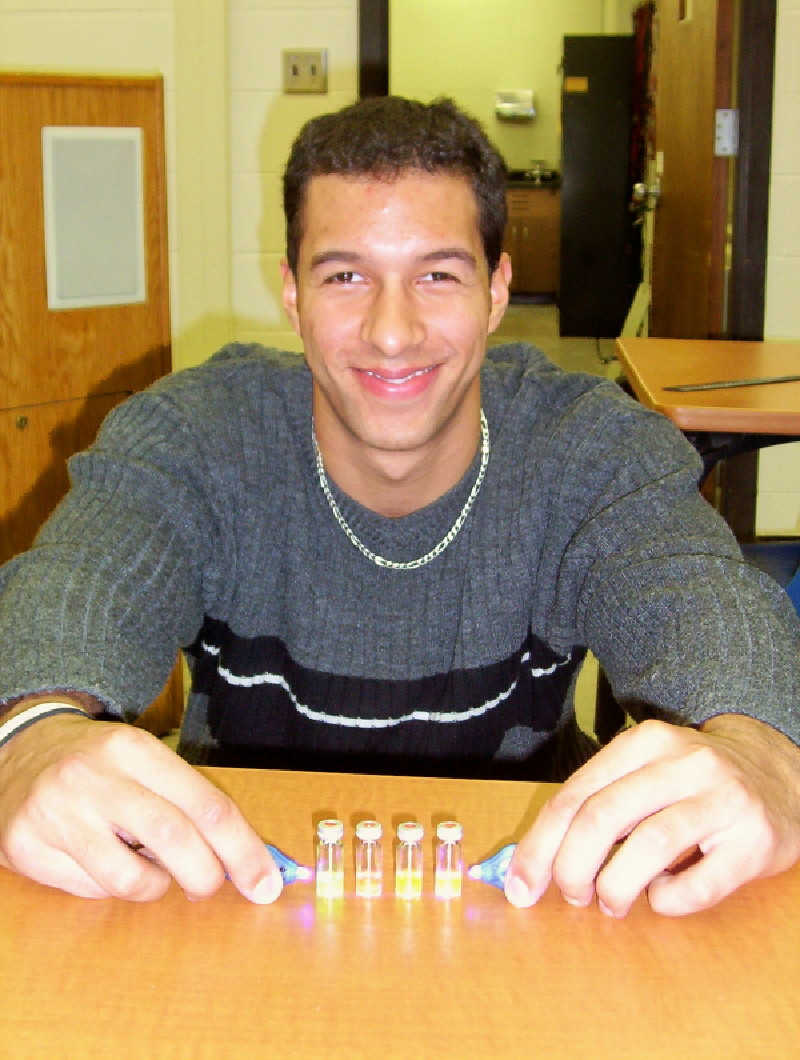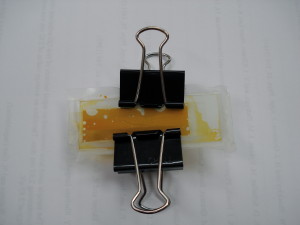


Evaluation of InP QDs
as Sensitizers for Solar Cells
Joe Shehata '08
 |
 |
 |
| Quantum dot samples exhibiting fluorescence | Joe being flourescent | Joe's home made solar cell |
Abstract:
The recently developed dye-sensitized solar cell (DSSC) has attracted much attention due to its potential for high solar conversion efficiency and low manufacturing and maintenance costs. It functions based on the sensitization of mesoscopic oxide films by dyes and has demonstrated potential as a clean, renewable energy source. A variation of this new type of cell incorporates quantum dots (QDs) as a substitute for the conventional dye molecules. The QD-sensitized solar cell has several advantages over the DSSC owing to the many unique properties of the QD, most notably, the tunability of its band gap and its ability for multicarrier excitation. Here, we constructed an indium phosphide QD-sensitized solar cell and characterized it using common photovoltaic measurements in order to evaluate the potential advantages of using QDs as a sensitizing material. The efficiency of the cell was calculated under non-standard conditions and found to be 1.76x10–4 for an intensity of G = 0.401 W/m2 and 7.4x10–5 for an intensity of G = 0.094 W/m2. Fill Factors were also calculated and had values of 0.39 at G = 0.401 W/m2 and 0.25 at G = 0.094 W/m2.
For more information, contact Dr. Catherine Jahncke:
Return To 2008 Senior Projects
|
|
||
| © | St. Lawrence University | Department of Physics |
| Revised: 02 Jun 2008 | Canton, NY 13617 |